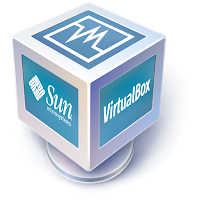 If you are a Linux user and have Linux installed in the Virtual Machine
(Virtual Box) then you preferably want to share a folder between your
windows host machine and the Linux guest machine. This tutorial will
guide you how you can share a folder and your data between two systems.
If you are a Linux user and have Linux installed in the Virtual Machine
(Virtual Box) then you preferably want to share a folder between your
windows host machine and the Linux guest machine. This tutorial will
guide you how you can share a folder and your data between two systems.First you need to have GuestAdditions installed on your guest machine.
1. Go to settings in VirtualBox.

2. Now select Shared Folders and click on the Add Shared Folder (or press Ins)

3. New window will open.

Select other and select the path for the folder to be shared with the linux guest machine. (let us say we have shared a folder named sharedhost and check the box auto mount in present.
All this has to be done in the host side.
4. Now start the Linux machine.
5. Open terminal, get root access and type:
#mkdir /mnt/sharedguest
sharedguest will be present in the mnt folder.
6. Now type:
#mount -t vboxsf sharedhost /mnt/sharedguest
This line you have to enter every time you login into the system. Else we can add this line to rc.local file so that it initializes on every restart.
For that type:
#gedit /etc/rc.local
now add
#mount -t vboxsf sharedhost /mnt/sharedguest
before
touch /var/lock/subsys/local
it should look like this

now restart the machine and check the mnt > sharedguest.
Read more!


